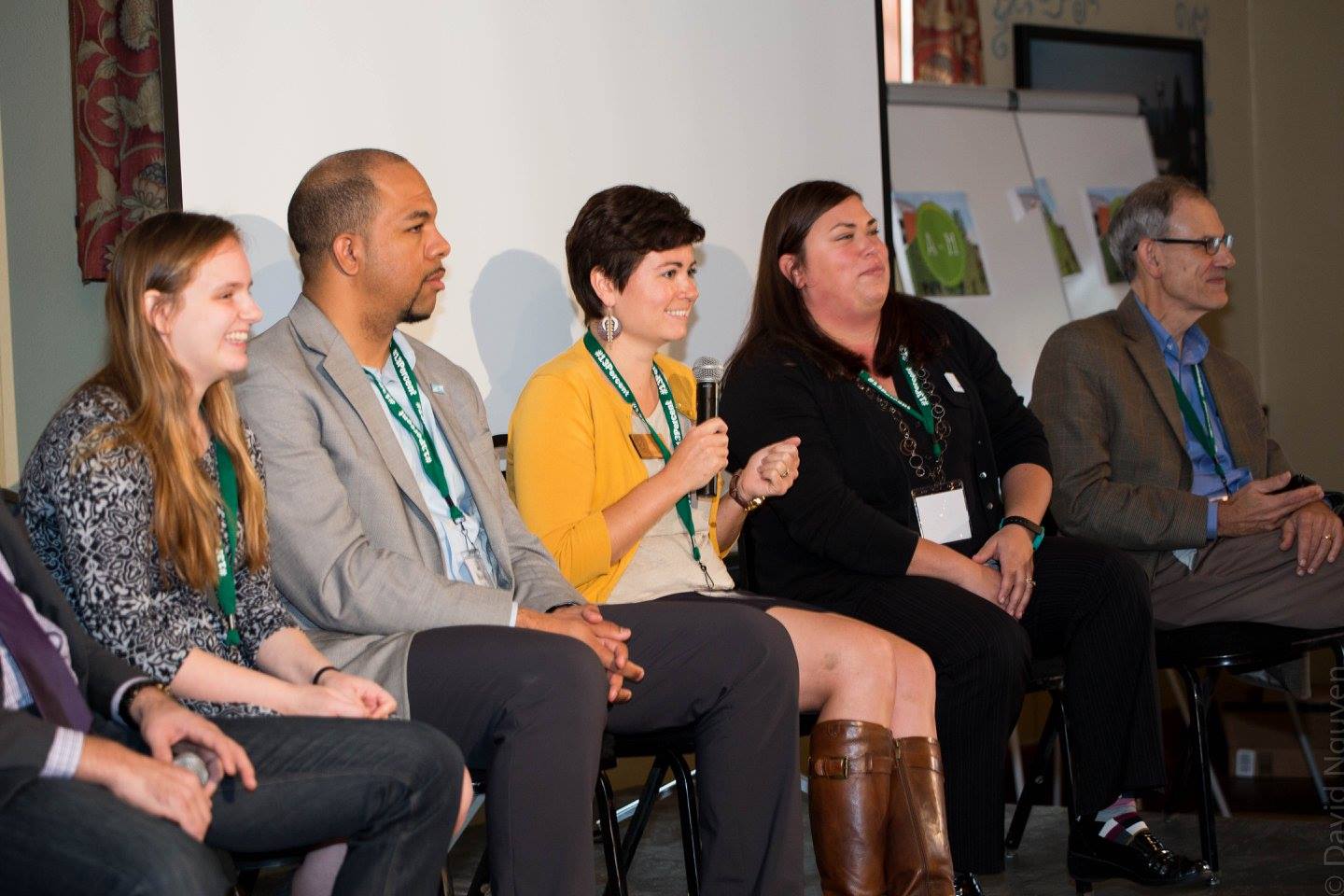
By Andrew Coulson – LinkedIn, Pinterest, and Twitter
Unfortunately, I was unable to attend #ELGL15, due to a little matter of deep water getting in the way, but I managed to gatehash along with the proceedings thanks to those wonderful members who tweeted using the conference hashtag #ELGL15.
The refreshing panel of young, innovative elected officials stuck in my mind. In particular, I was struck by their conversation about making council meetings more accessible to those who feel disenfranchised due to the barriers we put in place by the simple mechanics of meeting procedures that have been in place for 100’s of years. In fact, as I was reading the tweets, this quote from the amazing Rear Admiral Grace Hopper was floating around my head.

One of the panelist highlighted simple ways to remove obstacles to make meetings more accessible. Following the panelist’s suggestions, I was shocked by the Twitter reaction. Shocked, not because the ideas were outside the box, but shocked that local government in the U.S are not already employing these tactics.
The discussion and subsequent Twitter reaction compelled me to write about my experiences over the last 13 years, and tactics I have employed to make meetings more accessible.
5 Keys to an Accessible Meeting
My definition of accessible meetings does not include hosting more meeting or hosting meeting online. My definition is focused on removing the existing barriers that prevent citizens from attending meetings, by using simple tools and techniques, to ensure comfortable participation and higher attendance by a wider demographic. I strongly believe that face-to-face meetings provide a unique opportunity to read body language while citizens provide input in a comfortable environment.
Planned poorly, community meetings can be the death of any engagement strategy. Avoiding the boring, stuffy meetings held in ‘brown’ council offices is key. I highlighted a few strategies to avoid your meeting from becoming another typical government meeting.
Go to them – pretty simple really. If you go to where your community congregates, you will get better participation. I have hosted meetings in cafes, libraries, pubs and even IKEA! Recently, a colleague engaged folks on a popular bus route where she knew people had at least a 30 minute journey. Remember if using a location above ground level make sure there is lift access for those with mobility issues.
Make it easy to attend – Feed them, provide child care, offer to book taxis, eliminate safety concerns in the area.
 Color-coded documents – Many community meetings forget to take into account those with poor reading skills or a learning disability. Simply providing participants with reams of paper – policies, presentations etc. – is not an answer. People with poor eye sight or low literacy level will automatically feel isolated and unable to contribute. To rectify this, consider a different color dot on the first page or print the front page of each document using different color and when referring to a specific document call out the color of the document not the title.
Color-coded documents – Many community meetings forget to take into account those with poor reading skills or a learning disability. Simply providing participants with reams of paper – policies, presentations etc. – is not an answer. People with poor eye sight or low literacy level will automatically feel isolated and unable to contribute. To rectify this, consider a different color dot on the first page or print the front page of each document using different color and when referring to a specific document call out the color of the document not the title.
Plain language should be used in documents, font size of 12 or larger, and write numbers instead of spelling them out, i.e. 123 instead of One hundred and Twenty Three. A great reference document is Mencap’s – Am I making myself clear.
Red card/Green card – This technique is perfect for meetings with multiple sessions. Often, in meetings, you will have a couple of dominant speakers. The red and green cards allow those who may be shy or less confident, to get involved without having to raise their voice. The red card is used to show that a person wishes to stop a speaker and ask them to explain something – abbreviation, acronyms etc. The green card can be used to show the chair/facilitator that they have a question. Normally red cards are acknowledged immediately by the moderate while green cards are acknowledged when a speaker is finished. Using the cards allows speakers to talk without interruptions, and the facilitator has an easier time managing the meeting.
Use the community’s skills – Involve the experts in your community. They can help you find meeting places, caterers that provide food behind soggy sandwiches, and importantly, assist in finding translators. (I’ve had community members provide the food themselves because they knew it would entice others out of their homes, can’t beat home cooking right!)
I have used paid community groups to translate a DVD, which saved thousands in professional fees. Basically, I had seven languages translated for the price of one. The benefit of this approach was a translated transcript of the DVD in various community languages and dialects, and the different communities were watching and understanding the message in the DVD. Win Win! For another win, I paid a local community group instead of a company with less community connections.
These are a few tips, and admittedly, some of these options require more time and money but the result is people who are committed, awake and concentrating. The whole point of engaging the community is to bring them along on the journey by building trust and accountability. Removing barriers to participation goes a long way.
Supplemental Reading
- 360 Review with Andrew Coulson, Australia
- Trending in Australia with Andrew Coulson
- 5 Ways to Use Twitter Polls in Local Government
- Hello America…..This Is Australia Calling
- LocalGovSolutions: Mirroring Your Online Engagement Offline
